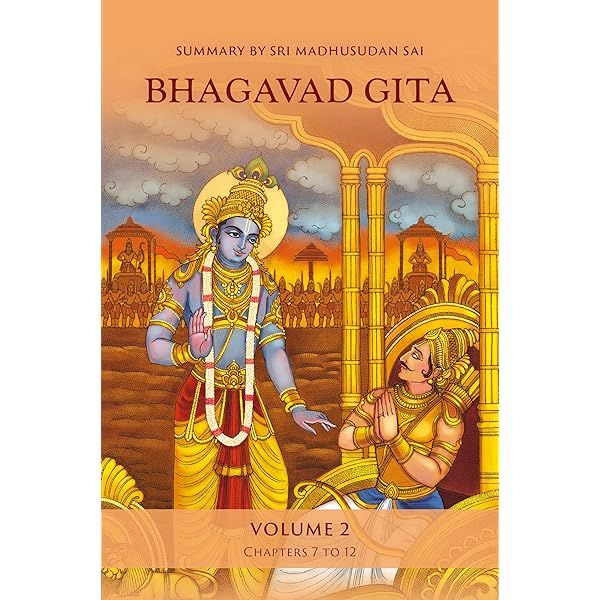PREFACE
byPreface to The Bhagavad-Gita invites readers into a work that transcends literary form, occupying a unique space where poetry meets philosophy. Positioned within the “Bhishma” section of the Mahabharata, this revered Sanskrit text is counted among the Five Jewels of Indian classical thought. It is not merely admired for its aesthetic quality, but for the depth of its wisdom and moral vision. The teachings interweave traditions from Vedic philosophy, Samkhya analysis, and Yogic practice. Thinkers like Kapila and Patanjali echo through its verses, creating a spiritual fabric that is intricate yet unified. Scholars across the world have paused to appreciate its insights, with some even comparing its intensity of devotion and sense of the divine to passages found in sacred texts of other faiths. What makes it remarkable is how this text speaks to the human condition through dialogue, not doctrine—urging introspection more than prescription.
There has been ongoing discussion about the date of its origin. While clearly a later addition to the Mahabharata, many believe its philosophical core predates much of its surroundings, possibly composed several centuries before the Common Era. Some scholars suggest a timeframe as late as the third century A.D., but this does not weaken its authenticity. Rather, such dating enriches its value, opening a window into cultural dialogues that may have occurred between ancient civilizations. Moral parallels between the Bhagavad-Gita and early Christian teachings have led some to consider potential exchanges of thought, though most hold these similarities as naturally arising from the shared quest for spiritual truth. Whether connected or not, both traditions emphasize virtues like humility, sacrifice, and duty, suggesting a universal moral thread woven into different historical tapestries. In this way, the Gita becomes both a mirror and a bridge—reflecting India’s heritage while resonating with ethical themes recognizable across cultures.
The battlefield of Kurukshetra, where the dialogue between Arjuna and Krishna unfolds, is more than a physical setting. It represents the inner landscape where one must confront moral dilemmas and existential fear. Located in what is now part of Haryana, between the Jumna and the Sarsooti rivers, this ancient terrain serves as a symbolic arena where divine counsel meets human hesitation. Krishna, who hides his divinity beneath the humble role of charioteer, guides Arjuna through a moment of crisis not by imposing authority, but by unfolding layers of reality and duty. This interaction becomes the foundation for a discussion that explores ethics, the soul, action, and liberation. The timeless relevance of this conversation lies in its refusal to oversimplify. It does not offer one solution, but rather urges awareness of intention and context, allowing space for thoughtful living.
One of the reasons the Gita remains relevant today is its capacity to address inner conflict with clarity and compassion. The tension between duty and emotion, action and renunciation, self and the universal, all find expression in its verses. Unlike many spiritual texts that lean toward renunciation, the Gita advocates for responsible engagement with the world. It teaches that spiritual realization is not found in escape, but in fulfilling one’s role with detachment and devotion. This guidance is particularly compelling in the modern context, where people face moral uncertainty and long for meaning beyond material success. The Gita provides a framework that honors both inner peace and active contribution, making it not just a relic of the past, but a guide for conscious living.
Its author remains anonymous, yet the voice is unmistakably wise. The absence of personal ego in its delivery reinforces the universality of its message. The Gita does not seek to glorify one figure, but rather to awaken a higher understanding in all who listen. The dialogue format allows the reader to identify with Arjuna’s doubts and dilemmas, while gradually being led toward Krishna’s perspective of balance, clarity, and transcendence. Each verse functions like a seed—simple at first, but capable of unfolding great insight with contemplation. Over time, the Gita has been translated, recited, and studied by seekers across the globe. It continues to shape the moral compass of individuals who value integrity, courage, and spiritual depth.
The Gita’s ability to speak across time and place lies in its balance of devotion and discernment. It does not separate the sacred from the everyday, but shows how daily duties, when performed with awareness and humility, can become pathways to liberation. This principle—Karma Yoga—is one of the core offerings of the text. It bridges the gap between philosophy and practice, inviting the reader to walk their own path with dignity. Whether one reads it as scripture, poetry, or philosophy, its wisdom continues to echo long after the final verse. In that way, the Bhagavad-Gita is not only a book to be read, but a guide to be lived, teaching not what to believe, but how to see.

